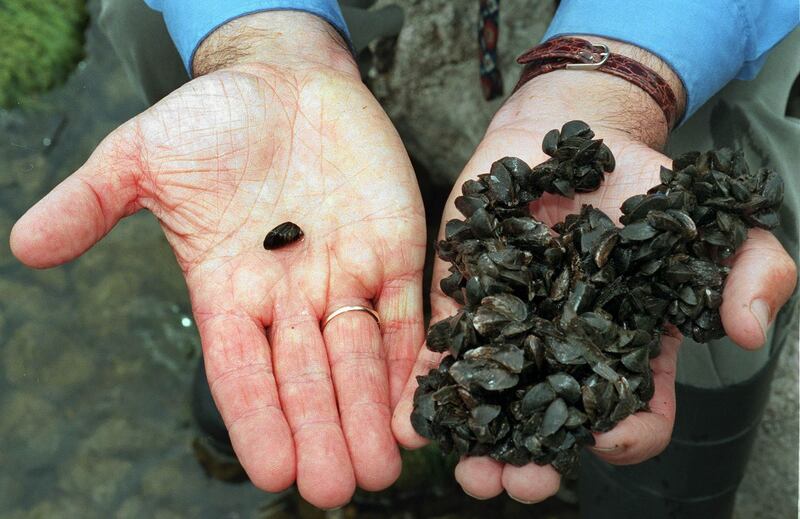Look at a map of Northern Ireland and you might imagine Lough Neagh was its dominant physical feature, with a cultural impact to match.
In reality, the largest freshwater lake in the UK and Ireland is bizarrely obscure, a blank space on the mental maps of most inhabitants. Just glimpsing it is unusual, as only minor roads skirt a few stretches of its boggy shores. There are only three public access points of any note, council-run parks and marinas on the outskirts of Lurgan, Antrim and the Co Derry village of Ballyronan. There are no lakefront settlements or even much housing, as the shoreline is notorious for plagues of flies. The only significant industries are eel fishing for export – eels are not part of the local diet – and sand dredging, whose facilities have the aesthetics of a quarry. None of this is conducive to leisure use, although heroic efforts are made.
Many people do glimpse the lough when they turn on a tap, as it supplies 40 per cent of Northern Ireland’s drinking water. Yet even that has not spurred much concern for its condition, indicating how much it is out of sight and out of mind.
It has taken an unprecedented algal bloom to grab public and media attention. In May, dog walkers were warned of toxic algae after several pets died. In July the algae reached Co Antrim’s causeway coast via the river Bann, closing beaches at the height of the tourist season. Now boat owners in Lough Neagh are posting footage of marinas filling up with green goo. The Northern Ireland Environment Agency says it will take 21 years for water quality to return to “good” status, even if “nutrient inputs” are reduced.
READ MORE
The main sources of excess nutrients are agricultural run-off, slurry and untreated wastewater, including sewage. Ironically, a sudden cleaning of the water by zebra mussels has finally tipped the system over the edge. Numbers of the invasive species, first spotted in Lough Neagh in 2005, have exploded since 2017. Their filter feeding makes the water clearer, letting in more sunlight and triggering algal blooms. It also destroys the food chain for other animals. Eradicating zebra mussels would be an epic undertaking and there are no plans to attempt it.

Recovery is possible: the lough suffered a similar ecological collapse in the 1970s, but water quality improved dramatically in the 1990s after investment in sewage treatment plants. Stormont regulated sand dredging in 2021, following years of pressure by environmental activists.
However, these are rare successes in a record of neglect under direct rule and devolution. The root cause is a confusing spread of responsibilities across multiple government departments and their agencies, plus five local councils, leading to buck-passing, turf wars and bureaucratic gridlock. Multi-agency partnerships and plans are regularly cobbled together but nothing can compensate for the lack of a single authority with overall control. The lough is unusual in having no statutory body charged with its management – too many cooks have turned it into a green broth.
As with so many problems in Northern Ireland, Stormont’s absence cannot be helping but its return would probably make little difference.
A more intriguing question, with its own political and constitutional subtext, is why Waterways Ireland has no role in the lough and seems reluctant to get involved
The lake bed and exposed shores belong to the 12th earl of Shaftesbury, whose estate charges a fee for sand extraction. This feudal anachronism is sometimes blamed for the administrative tangle but the earl does not own the water, or have any responsibility for causing or preventing pollution. The Shaftesbury Estate offered to sell the lough to the government during the last period of direct rule in 2005, reportedly for a trivial £6 million (€7 million). This was turned down for reasons that have never been explained. In 2014, Stormont considered bringing the lake bed under public ownership but decided it was not worth the bother. The earl is Lough Neagh’s red herring.
A more intriguing question, with its own political and constitutional subtext, is why Waterways Ireland has no role in the lough and seems reluctant to get involved.
One of six North-South bodies established under the Belfast Agreement, it is responsible for the management and development of navigable inland waters, primarily for recreation. Based in Enniskillen, the Lough Erne system is under its remit but Lough Neagh is not, again for reasons that have never been explained.
Although Waterways Ireland could provide Lough Neagh with a single guiding mind, tackling pollution directly is above its paygrade – Lough Erne is also choked with algae this year.
Whatever the management structure, progress requires a government prepared to assertively regulate farming and industry, the food processing industry in particular, and to fund a massive investment in Northern Ireland’s overloaded sewage system, possibly by introducing domestic water charges.
Neither part of Ireland has ever had such a government. The North is unlikely to acquire one first, or soon.
This article was edited at 9.30am on August 24 2023 to correct an error














